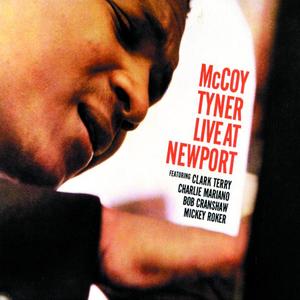
Live At Newport
performed by McCoy Tyner, 1938- (Universal Classics & Jazz, 1999), 39 mins
Details
- Field of Interest
- Jazz
- Content Type
- Music recording
- Duration
- 39 mins
- Format
- Audio
- Sub Genre
- Post-Bop, Piano Jazz
- Label
- Universal Classics & Jazz
- Performer
- McCoy Tyner, 1938-
- UPC (Physical)
- 00731454798020
- Date Recorded
- 1963-07-05
- Release Date
- 1999-11-09
- Review
- Live at Newport was the first live recording McCoy Tyner led, and it happened to be among his most memorable dates for Impulse, but like many memorable sessions, it was the end result of equal parts planning, spontaneity, and talent. According to Willis Conover's original liner notes, Tyner was worn out from playing Montreal the night before, and he was paired with three musicians he'd never played with before (trumpeter Clark Terry, alto saxophonist Charlie Mariano, and bassist Bob Cranshaw), two of who were using borrowed instruments. Given such chaotic circumstances, it's not surprising that the quintet (also featuring drummer Mickey Roker, a former colleague of Tyner's) chose to play two standards, plus Tyner's "Monk's Blues," Dizzy Gillespie's "Woody 'n' You," and the improvised opening jam, "Newport Romp." What is a surprise is that not only does the group hold together, but they excel. They sound empathetic, as if they've played many times before, yet there are enough sparks to signal that they're still unsure of what the other will play. The results are thoroughly compelling and unpredictable, even when it's just a Tyner showcase, like "Monk's Blues." Essentially a solo showcase with support from Cranshaw and Roker, Tyner really pushes on this number, beginning it as a Monk homage and pushing it to continually inventive territory. It's the riskiest playing on the record from Tyner, but just because Live at Newport isn't as risky as his work with Coltrane during the early '60s doesn't mean it's limp or complacent. It's straight-ahead hard bop in the best possible sense -- accessible but stimulating, engaging and vibrant from beginning to end. ~ Stephen Thomas Erlewine, All Music Guide
- Subject
- Jazz, Music & Performing Arts, Post-Bop, Piano Jazz, Post-Bop, Jazz para Piano, Piano Jazz
- Keywords and Translated Subjects
- Post-Bop, Jazz para Piano, Piano Jazz
